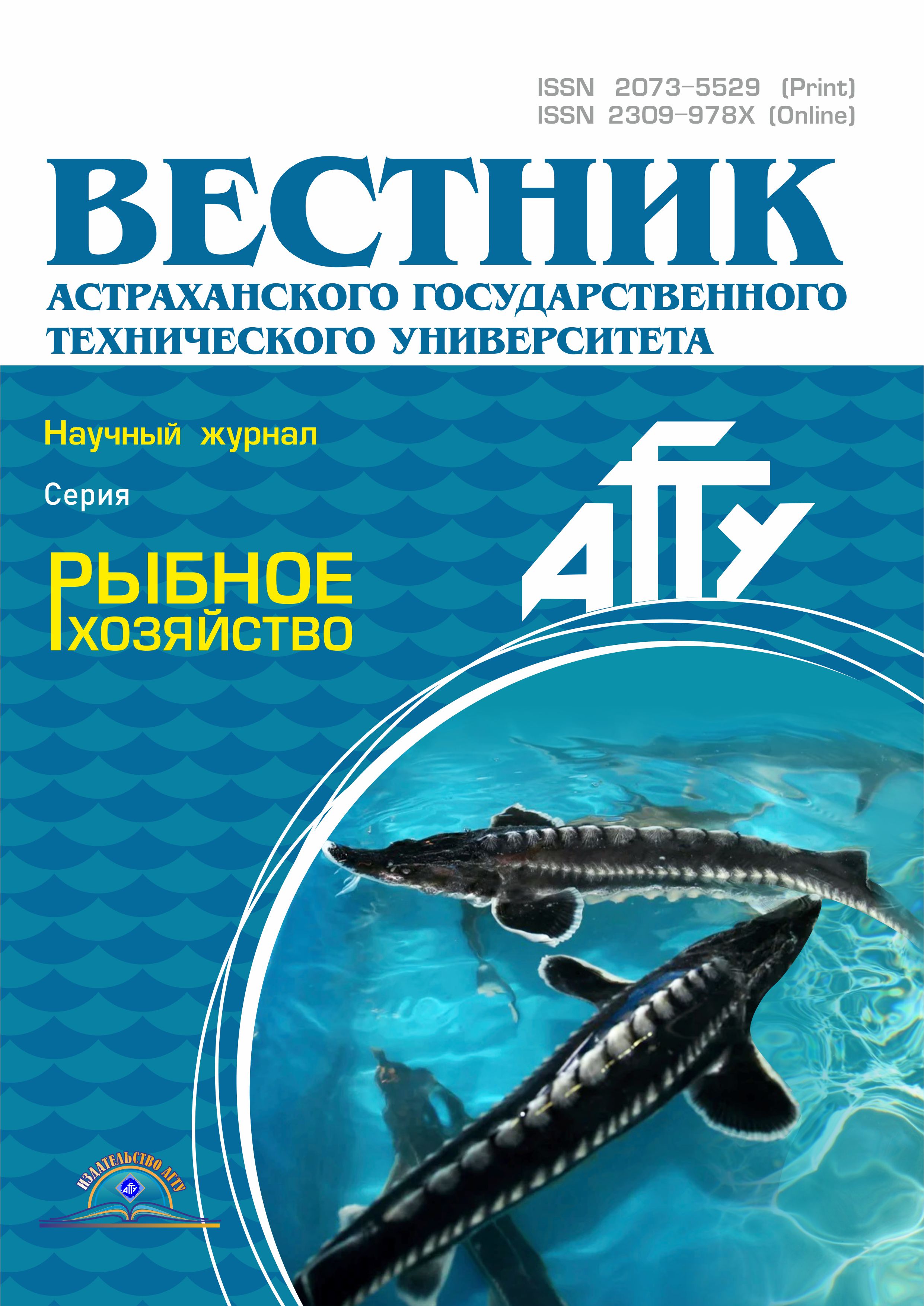Text (PDF):
Read
Download
Introduction Stocks of perch decreased three times over the last ten years. The production of valuable commercial fish is 0.4 thousands tons today (for example, in the period 1970–2000 the annual fishing was 3.9 thousands tons. Maximum catches occurred in the first half of the XXth century [1, 2]. It is also important to note that the number of juvenile perch in spawning grounds of the Volga-Caspian region in 2003 fell a thousand times [3]. Decrease in stocks of perch is conditioned by a number of factors. First there was a shift of timing, decrease in the spring floods, high press of poaching and decline in artificial reproduction. In the present time, the completion of the natural spawning population of the Volga-Caspian perch is particularly acute. Particular attention should be focused on the state of the producers of this valuable species. The purpose of the research is to determine morphological parameters of mature perch. Objectives: - to study the morphometric parameters of mature perch. - to study physiological indicators of mature perch. Materials and methods of research Researches were carried out in November 2012 at water temperature 5 °C and 12 °C. The producers of the spawning Volga-Caspian perch are taken as a material of the study. Methods of the research are the study of morphometric parameters, the definition of condition factor (by Fulton), hemoglobin (hemoglobin cyanide method) and total serum protein (biuret method). Determination of hematological parameters was performed with a biochemical photometer using conventional techniques. The results of the research Perch sampling was carried out in the place of its prey (Fig. 1). The results of morphometric studies are presented in Table 1. Fig. 1. Extraction of water bioresources using beach seine Table 1 Morphometric characteristics of producers of the Volga-Caspian perch population Nm, kgL(scale), cmLС, cm 1234 12.758.565.5 2144.548 3114851 40.73741 50.943.548.5 60.93740.5 70.94245.5 81.544.549.5 91.24346.5 101.445.550 110.794245 120.944.548 130.7842.246 140.8845.246 1514650 161.14646.5 1714549 180.8541.546 190.7340.544 1234 200.824145 2114347 220.944448 230.94347 241.445.550 251.141.545.5 261.343.546 271.4645.548 281.346.551 291.143.551 301.245.550 Table 1 has shown that the fish weight ranged from 0.7 to 2.7 kg, the average weight was 1.1 ± 0.07 kg. The average length by Smith was 47.8 ± 0.78 cm, the full length to the end of the scaled cover – 44.0 ± 0.68 cm. One of the important characteristics, demonstrating the feeding and diet of perch is a condition factor by Fulton (Fig. 2). Fig. 2. Condition factor of spawning Volga-Caspian perch Condition factor is in the range of 0.95 to 1.78, and the average is 1.27 ± 0.04. Data on the nutritional status of adult perch characterized as satisfactory. Special attention in our research was given to the evaluation of hematological status of fish studied (Table 2). Table 2 Hematology of adult Volga-Caspian perch SpeciesHemoglobin, g/lTotal serum protein, g/l Pikeperch 67.2 ± 1.6249.16 ± 1.08 Hemoglobin varied between 49–80 mg/L, total serum protein – 40–61 g/l. Findings 1. The average weight of adult perch was 1.1 ± 0.07 kg. The coefficient of variation is 31.25 %, the standard deviation is 0.375. The average length by Smith was 47.8 ± 0.78 cm, with a coefficient of variation of 8.9% and the standard deviation of 4.26. The full length to the end of the scaled cover is 44.0 ± 0.68 cm with a coefficient of variation of 8.44 % and the standard deviation of 3.71. The average value of condition factor by Fulton was 1.27 ± 0.04. 2. The average hemoglobin index was 67.2 ± 1.62 g/l with a coefficient of variation of 13.25 %, the standard deviation of 8.9. The average index of total serum protein is 49.16 ± 1.08 g/l with a coefficient of variation 12.04 % and standard deviation of 5.92.
















